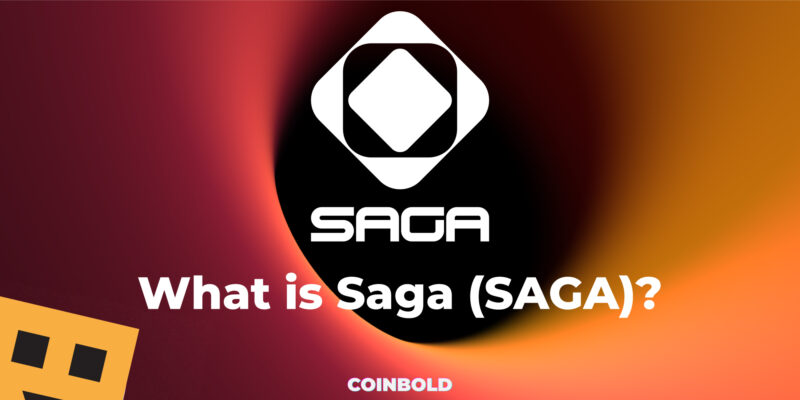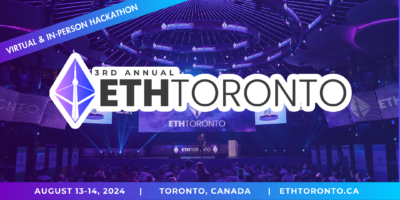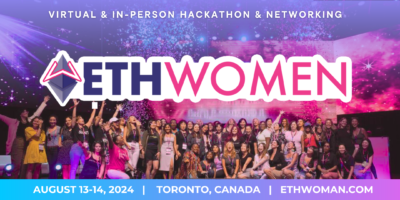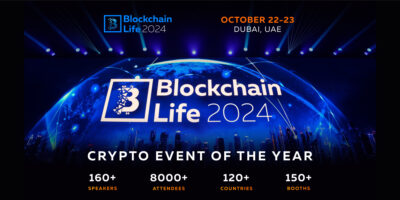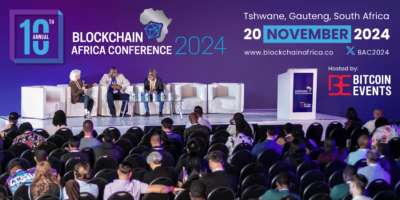Saga is a protocol that provides blockchain development services for decentralized applications. Let’s dive right in and learn more in this article!
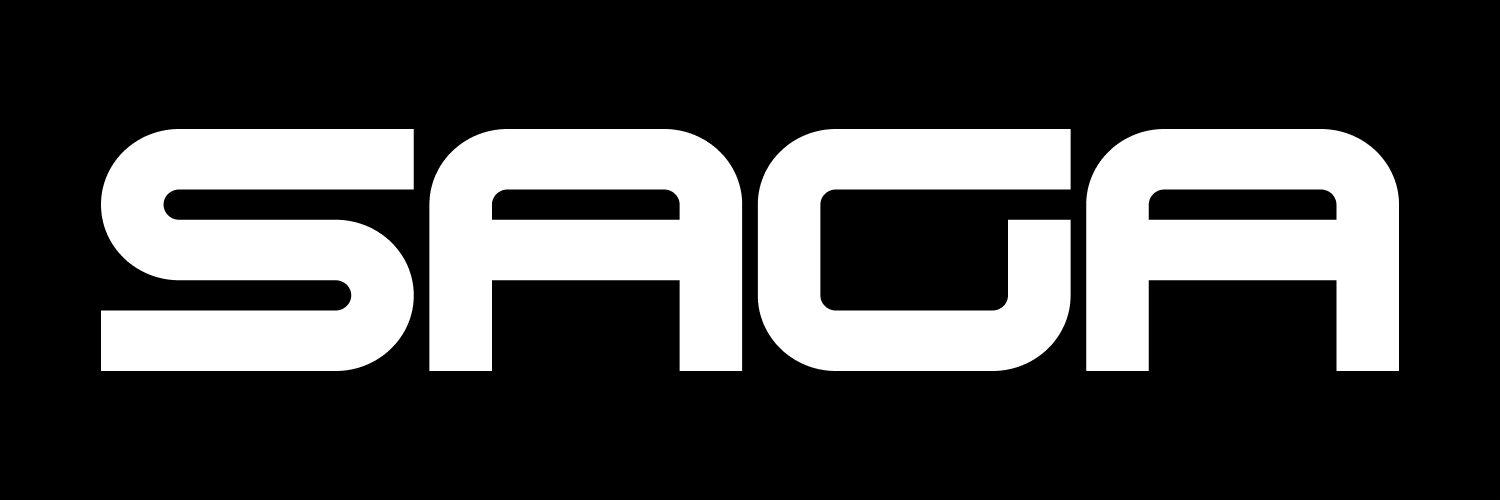
What is Saga (SAGA)?
Saga Protocol is a venture that offers blockchain construction services for applications. Essentially, Saga functions as a blockchain platform designed to introduce additional blockchains, known as “Chainlets,” within the Saga ecosystem.
These Chainlets are safeguarded by Saga validators through a process called Interchain Security, which is a collaborative security system derived from Cosmos.
The concept of Interchain Security involves one blockchain serving as a security provider for others, specifically Chainlets in this scenario. As a result, Chainlets are able to leverage the advantages of operating a Cosmos SDK application while relying on Saga validators for block validation.
Solution for Building VM-Compatible Blockchains
Saga is presenting a specialized system for deploying blockchain that is user-friendly, decentralized, and secure. This system allows developers to have control over selecting their desired virtual machine, starting with support for the Ethereum Virtual Machine (EVM).
In the future, Chainlet is striving to be compatible with multiple virtual machines, giving developers the freedom to select from different options such as EVM, CosmWasm, or Javascript VM.
Chainlet Launching Process
Launching a Chainlet on Saga does not require permission, unlike on Cosmos Hub. Developers simply need to possess SAGA tokens to cover the expenses of setting up and maintaining their Chainlet. This process is akin to services offered by platforms like Amazon Web Services and other SaaS providers, with the distinction that the subscription fee for creating and managing a Chainlet is paid in SAGA tokens.
Once the fee is paid, validators are responsible for establishing and overseeing the infrastructure of the Chainlet, similar to how validators on Cosmos Hub manage app chain infrastructure.
To launch a Chainlet, developers must allocate funds to an escrow account using SAGA tokens. This escrow account can be funded with any desired amount and serves as a prepaid service to handle expenses related to the Chainlet. If the prepaid fee runs out, the Chainlet will become inactive until the developer deposits more SAGA into the account. The fee is calculated per epoch, with each epoch lasting approximately one day.
There are different methods to fund your margin account with SAGA tokens:
- Deposit money directly into your account with SAGA tokens
- Stake SAGA to an escrow account to pay fees through staking rewards
- Allows sponsors, community, and DAOs to pay fees
The fee required to participate in Chainlet is set by the validator prior to the start of each new day-long epoch. Validators each submit a proposal for the fee they wish to receive for their services, which are then locked in and chosen through a bidding process known as the “Musical Chair Auction”.
Musical Chair Auction – Model for determining Chainlet operating costs
The Musical Chair Auction is a method used to determine a standard price for carrying out Chainlet operations. In this auction, validators submit their bids, and only a select group with the lowest bids, known as the “Winning Set”, are chosen to operate the Chainlet. Validators with higher bids are categorized as the “Losing Set”.
The cost of operating a Chainlet is established by the highest bid within the Winning Set. This means that the validator with the highest bid in the Winning Set will be paid their desired price, while other validators not only secure their desired price but also earn a profit based on their bid.
Thus, the price paid by developers to validators for operating a Chainlet is based on the highest bid in the Winning Set, along with an additional profit. This profit ensures that all validators in the Winning Set receive a fair compensation for the services they provide to developers in running the Chainlet.
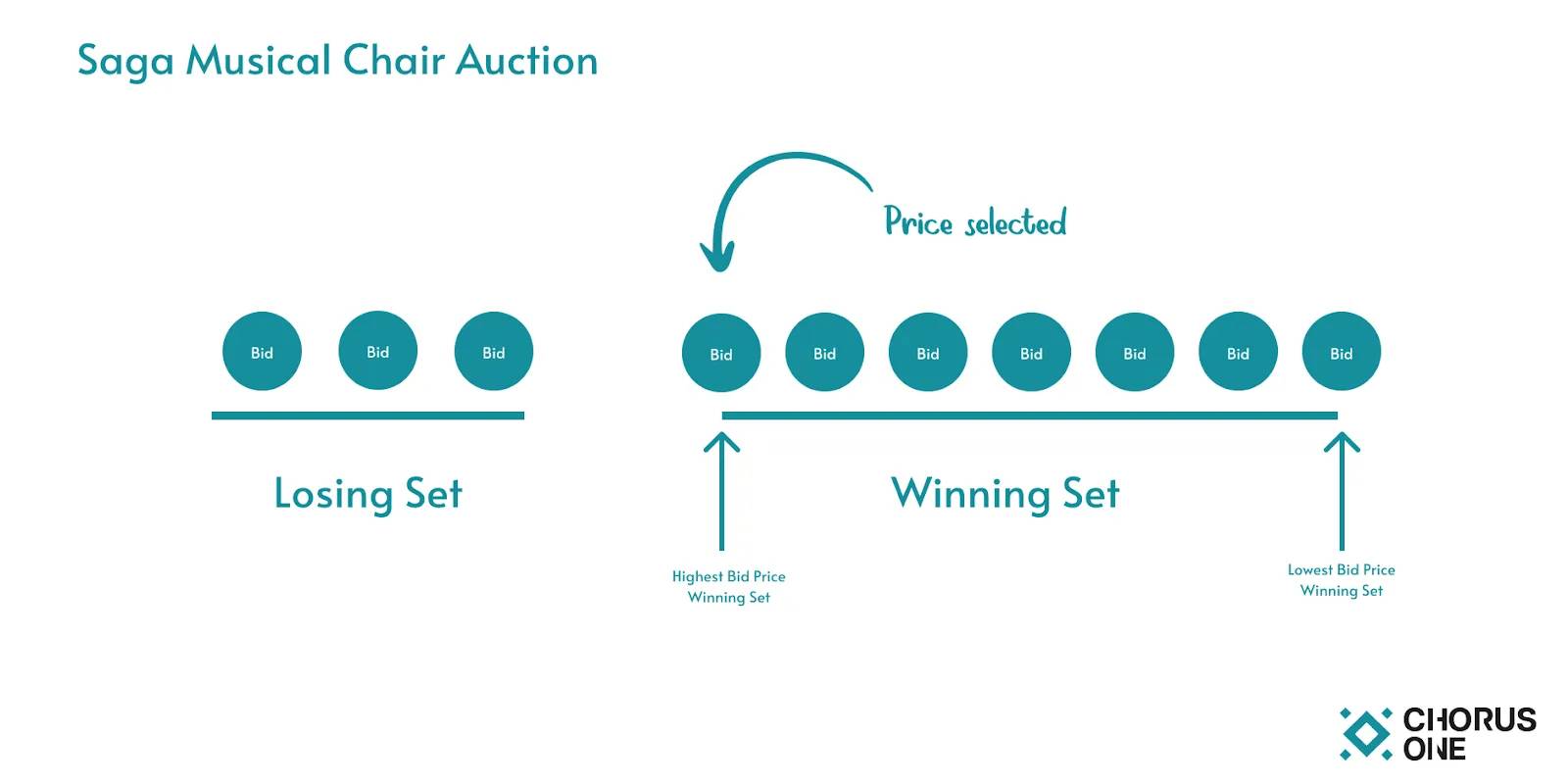
On the other hand, Musical Chair Auction poses potential risks for validators. This system aims to motivate validators to submit the most competitive bids, with rewards for validators in Winning Sets and consequences for validators in Losing Sets.
Tokenomics of SAGA
Token Name: Saga (SAGA)
Max Token Supply: 1,000,000,000 SAGA
Saga and Chainlet introduce a new token structure with transaction fees to be paid by end users to Chainlet developers; Developers will then pay gas fees to Saga Mainnet. This gives a high degree of flexibility to Chainlet and its development team in determining how end-user transaction fee funds are used. In a Chainlet, gas fees can be paid with SAGA tokens or other tokens such as ETH or USDC.
SAGA team
- Rebecca Liao – (CEO): Previously, she was Co-founder and held the CEO position at Skuchain, she brought Skuchain to annual sales of over 5 billion USD. Currently, Rebecca is an Advisor to Sommelier Protocol, responsible for designing the DAO to optimize governance, develop the platform, and ensure regulatory compliance.
- Jacob McDorman – (CTO): He is an entrepreneur and researcher with over a decade of experience in product development. He has a vision and practical approach, having worked as a business founder, entrepreneur, development studio owner and consultant.
- Jin Kwon – (CSO): He has contributed to the Cosmos ecosystem since 2018 and currently holds many important positions at Tendermint. He has a multidisciplinary background in engineering, sales, marketing and finance, and wants to see web3 technology widely integrated into everyday life.
- Bogdan Alexandrescu (Vice President, Engineering): He is a technology expert and industry leader with experience in many fields, from technology to fintech and business consulting. Before joining Saga, he had a notable career at Apple Inc and worked on large-scale, machine learning and artificial intelligence projects.

Investors
Saga has successfully secured 13.5 million USD in total through 3 rounds of seed funding. Investment funds and organizations such as placeholder, Samsung Next, GSR, Longhash Ventures, Maven11, and Hypersphere have all contributed to these capital calls.
Conclusion
Saga is a Layer 1 protocol that developers allow to automatically spin up parallelized and interoperable dedicated chains that elastically scale with their Web3 application needs.
Through this article, you probably have some basic information about the project to make your own investment decision.
You can currently earn SAGA tokens through Binance Launchpool by staking BNB or FUSD.

